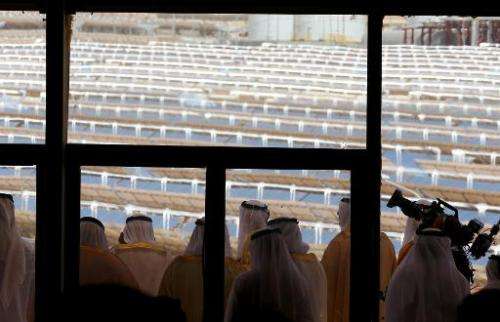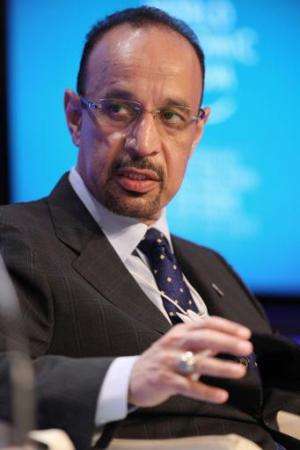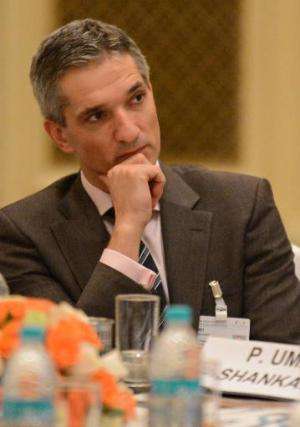Global energy meet highlights challenge of growing demand

The challenge of providing sustainable energy to a growing global population at a minimal environmental impact dominated debate at the World Energy Congress on Monday.
"Today, less than one-third of the world's seven billion people consume more than two-thirds of its primary energy supplies," Khalid al-Falih, the president of the world's largest oil exporter, Saudi Aramco, said in a keynote address.
"But by 2050, a total of nine billion people will aspire to a prosperous life," Falih said.
In a report released Monday at its triennial congress being held in Daegu, South Korea, the World Energy Council (WEC)laid out a host of challenges posed by that population growth, coupled with accelerated urbanisation.
The report built two energy scenarios—labelled "Jazz" and "Symphony"—for the world over the next four decades.
Under the Jazz scenario, which envisages a market-led energy policy focused on energy access, affordability and quality of supply, total primary energy supply could increase by 61 percent by 2050.
The government-led Symphony scenario—focused on environmental sustainability and energy security—envisages an increase of 27 percent.
But while both scenarios see a significant increase in energy access, the rate of that increase will remain insufficient.

Globally, between 730 million and 880 million people will still be without access to electricity in 2030, predominantly in sub-Saharan Africa, and this figure would only decrease to 319 million and 530 million people by 2050, it said.
"While there will be opportunities in the future for a range of technology solutions, the ultimate issue is that demand continues to grow at an unsustainable rate," said Karl Rose, the Council's director of policy.
Under both scenarios, Asia will account for nearly 50 percent of global energy consumption by 2050.
Ensuring energy supplies will require enormous investment over the next two decades which Falih estimated at around $40 trillion.
"That's virtually the annual GDP of China, the EU, and the US combined," the Aramco head said.
The WEC report put required investment in electricity generation alone at between $19 trillion and $25 trillion to meet demand levels in 2050.
While renewable energy is projected to increase rapidly, the Council said fossil fuels would continue to dominate the global energy mix, largely due to the demand for transport fuel.
As a result, both the scenarios put forward by the WEC envisage CO2 emissions well-beyond the target levels deemed necessary to meeting the UN-set target of limiting global warming to 2 C (3.6 F) over pre-industrial levels.

"At a time of unprecedented uncertainty these scenarios provide a stark warning to our energy future," said WEC Secretary General Christoph Frei.
"Our findings challenge our understanding of and current ability to deliver the resilient infrastructure that we need to face the changes we expect to occur over the coming decades," Frei said.
Some major oil-producing countries are looking to diversify their energy sources and reduce domestic demand for oil, but largely in an effort to protect boost lucrative oil exports on which their economies depend.

The United Arab Emirates is a massive investor in solar energy, but is also aiming for a one-third increase in oil output by 2017.
"We need to stop thinking that one form of energy will replace the other," UAE Energy Minister Suheil al-Mazrouei told AFP in Daegu.
"We need to think of them as complementing each other, and each country needs to have its own ideal mix," he said.
© 2013 AFP




















